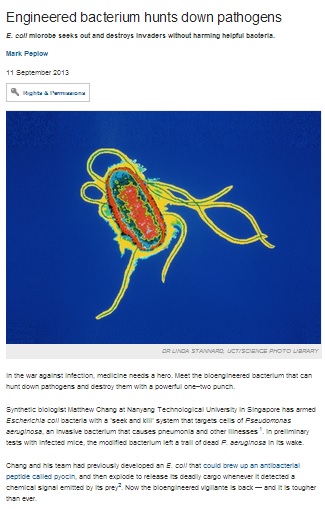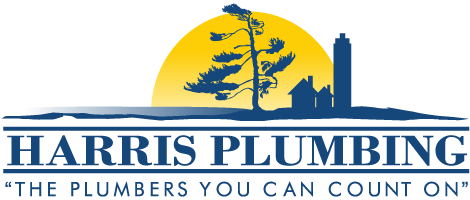Mark Peplow reports on Nature.com about a bio-engineered bacterium that can hunt down and destroy pathogens. Pathogens are biological agents that can cause diseases in a person by disrupting the person’s normal physiology.

“In the war against infection, medicine needs a hero. Meet the bioengineered bacterium that can hunt down pathogens and destroy them with a powerful one–two punch.
Synthetic biologist Matthew Chttps://harrisplumbing.ca/richmond-hill-plumbing-practicality-over-personalisation-in-remodels/hang at Nanyang Technological University in Singapore has armed Escherichia coli bacteria with a ‘seek and kill’ system that targets cells of Pseudomonas aeruginosa, an invasive bacterium that causes pneumonia and other illnesses1. In preliminary tests with infected mice, the modified bacterium left a trail of dead P. aeruginosa in its wake.”
Should the production and use of this new bacterium flourish, the world will certainly have a lot to be thankful for. However, as the saying goes, prevention is better than cure. In order to avoid diseases, everyone should maintain cleanliness in their homes and prevent pathogens from thriving. Drainage systems are one of the areas around the home where pathogens can rapidly multiply.
It is therefore important to ensure that drainage systems in Aurora and Newmarket homes are kept clean and working efficiently. Regular maintenance and drain cleaning in Aurora and Newmarket properties have to be done by plumbing experts, such as the drain professionals at Harris Plumbing North, Inc., who have the right skills and equipment to perform the job thoroughly.
Over time, drainage systems can get clogged with various objects, even with utmost care from homeowners to prevent this. Scheduled inspections and drain cleaning in Newmarket and Aurora homes can prevent any sewage clogging from worsening, and be the cause of a disease outbreak.
(Source: Engineered bacterium hunts down pathogens, Nature.com, September 11, 2013)

